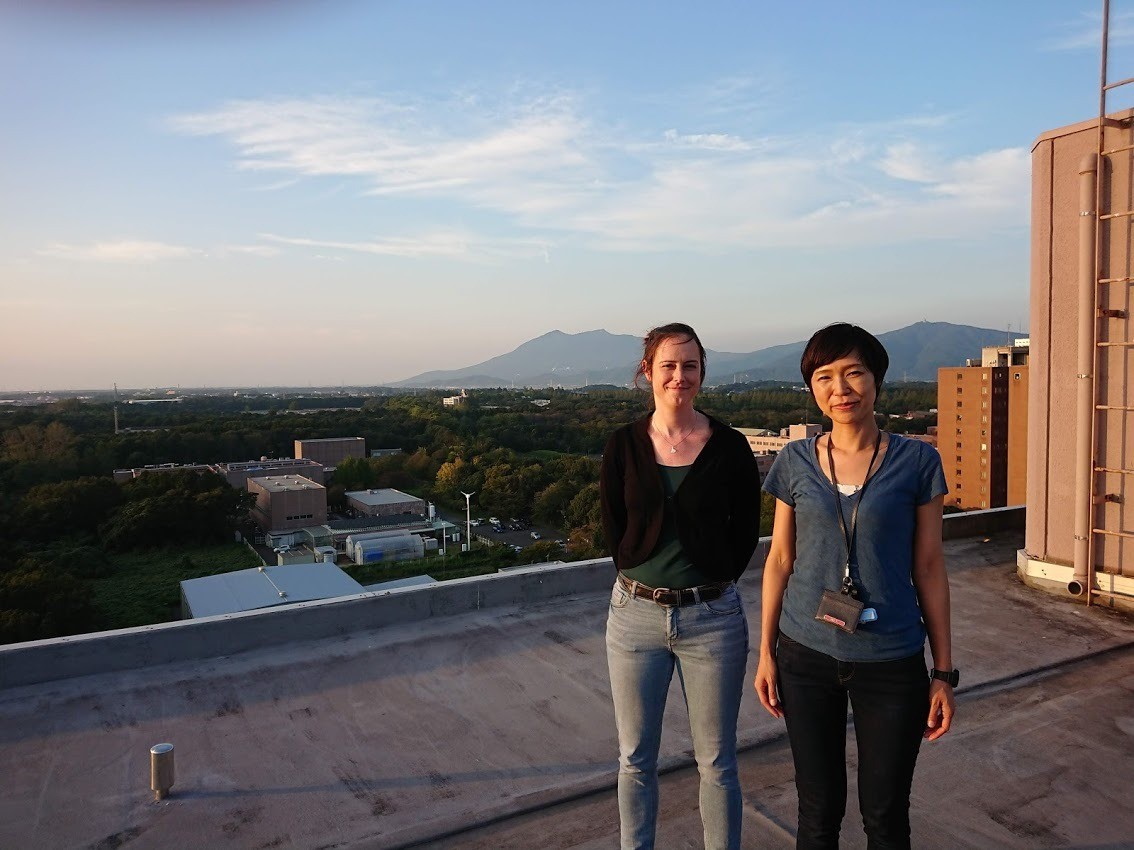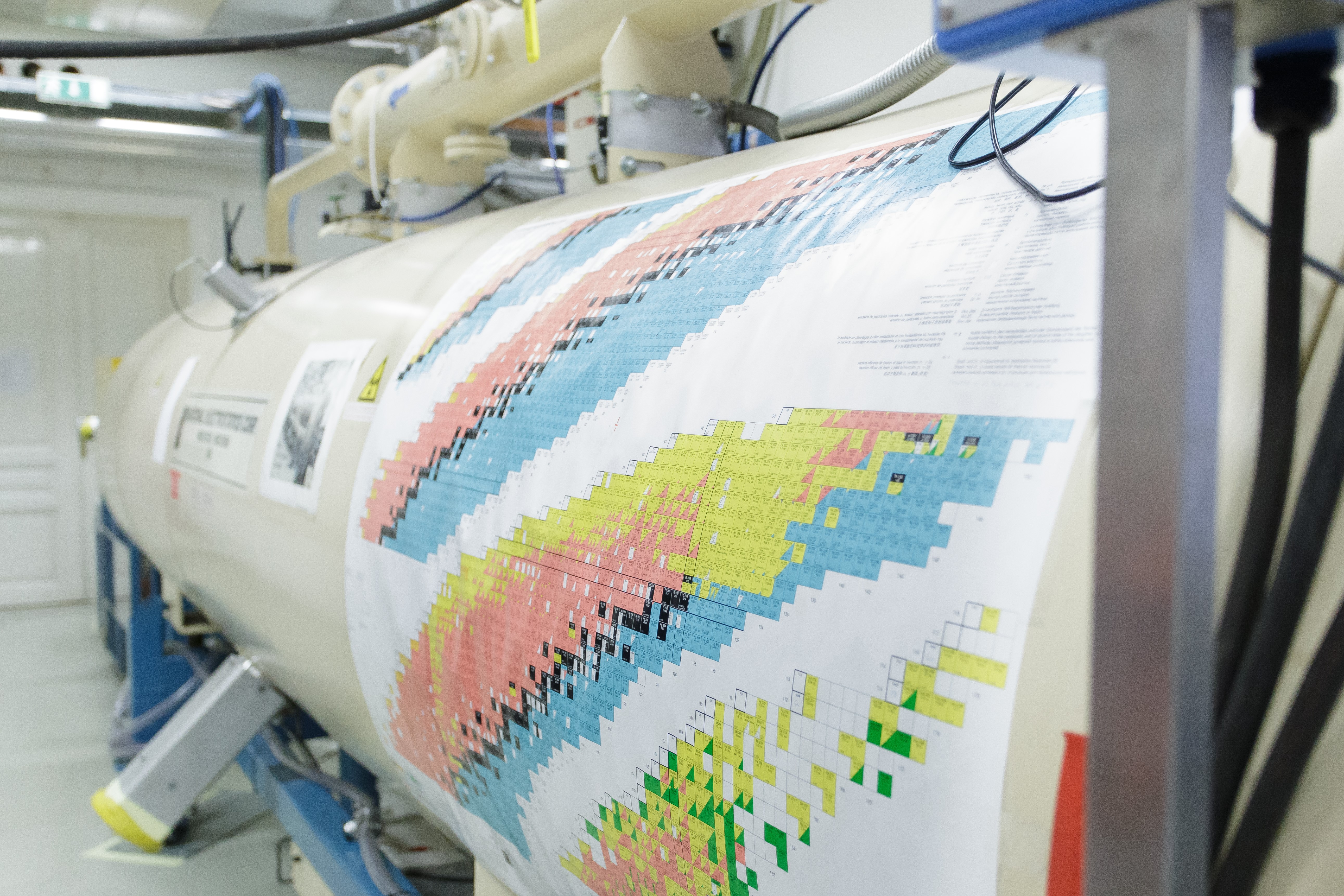Establishing a spike material for the analysis of Np-237
K. Hain, M. Martschini, P. Steier, A. Wiederin (Isotope Physics, University of Vienna)
A. Sakaguchi (University of Tsukuba, Japan)
A. Yokoyama (Kanazawa University, Japan)
J. Zheng (QST, Chiba, Japan)
Anthropogenic actinides like 239,240Pu and more recently 236U have been successfully applied as tracers for various environmental processes. The chemical properties of Neptunium (Np) suggest that it would provide complementary information to the nuclides mentioned before. 237Np is the second most abundant anthropogenic actinide in the environment after 239Pu, with releases of 1500kg 237Np by nuclear weapons testing and 340kg from the Sellafield Nuclear Reprocessing Plant alone. Nevertheless, studies on environmental 237Np are very limited to date due to various analytical challenges, and it has consequently been called “the neglected actinide”.
The long half-life of 2.144 My leads to a low specific activity of 237Np in the environment so that the detection of 237Np by activity measurements is unfeasible. Accelerator Mass Spectrometry (AMS) is able to fully suppress background from primordial 238U and therefore is well suited for the detection of 237Np. However, the lack of an isotopic yield tracer impedes the reliable quantification of the measurement results. Using non-isotopic tracers like 242Pu typically comes at the cost of large uncertainties and low reproducibility as different elements may lead to fractionation during sample preparation and the AMS measurement. Satisfying results can be obtained only when carefully optimizing the chemical preparation procedure for a specific sample matrix, e.g. sea water.
Our joint Austrian-Japanese research project aims to realize the full potential of 237Np by developing a suitable isotopic spike material for environmental samples. The isotopes 236gNp (T1/2=153000 y), 235Np, (T1/2=396 d) are explored as candidates to serve this purpose in (A)MS measurements. 236gNp would be the most convenient choice for AMS applications due to its long half-life and the absence of an abundant primordial atomic isobar. Unfortunately, the 238U(p,3n)236Np reaction to produce this isotope proposed in previous studies also co-produces a significant proportion of 237Np turning this material unusable as a spike for ultra-trace detection of 237Np. Based on promising preliminary calculations with the EMPIRE code, the 237Np co-production can be reduced significantly using the 232Th(7Li,xn)239-xNp reactions, where x denominates the number of neutrons evaporated by the excited nucleus. The model calculations show x to be highly energy dependent, with the maximum 236gNp production expected in the range of 35-40 MeV while built-up of 237Np would be suppressed by 2 orders of magnitude. It has to be noted that the excitation functions for the two nuclear reactions discussed before have not been determined experimentally before. The data obtained within the frame of our project will help to close this knowledge gap in nuclear physics.
For 235Np, the suppression of 237Np can be increased to 2.5 orders of magnitude by suitably adjusting the energy for the 232Th(7Li,xn)239-xNp reactions according to the EMPIRE model calculations. To date, this isotope has not been considered as a potential yield tracer for mass spectrometric methods, as the primordial isobar 235U cannot be suppressed sufficiently by chemical means. The ILIAMS system at VERA turns 235Np into a viable candidate. Optimization of the sample preparation and the ILIAMS measurement procedure to maximize the laser-photodetachment for uranium while maintaining a high transmission for neptunium will be a top priority for the work in Vienna. This research should provide a viable alternative in case the co-production of 237Np remains problematic for 236gNp, even with the new reaction.
While the irradiation and subsequent chemical purification will be carried out by the Japanese team, the VERA team will analyze the ratio of 236Np to 237Np as well as 236U and 236Pu, the decay products of 236mNp (T1/2= 22.5 h), a metastable excited state of 236Np, to assist in the development of the chemical separation procedure. As the branching ratio between the long-lived ground state 236gNp and 236mNp in the proposed nuclear reaction is not known, the decay products of the metastable 236Np have to be suppressed chemically and/or by the ILIAMS method to allow the quantitative determination of the produced amount of 236Np. Depending on the achieved purity of the spike material we will then decide either for 236Np or 235Np as spike material and demonstrate its use on a comprehensive set of environmental samples including Pacific Ocean water and peat bog samples.



